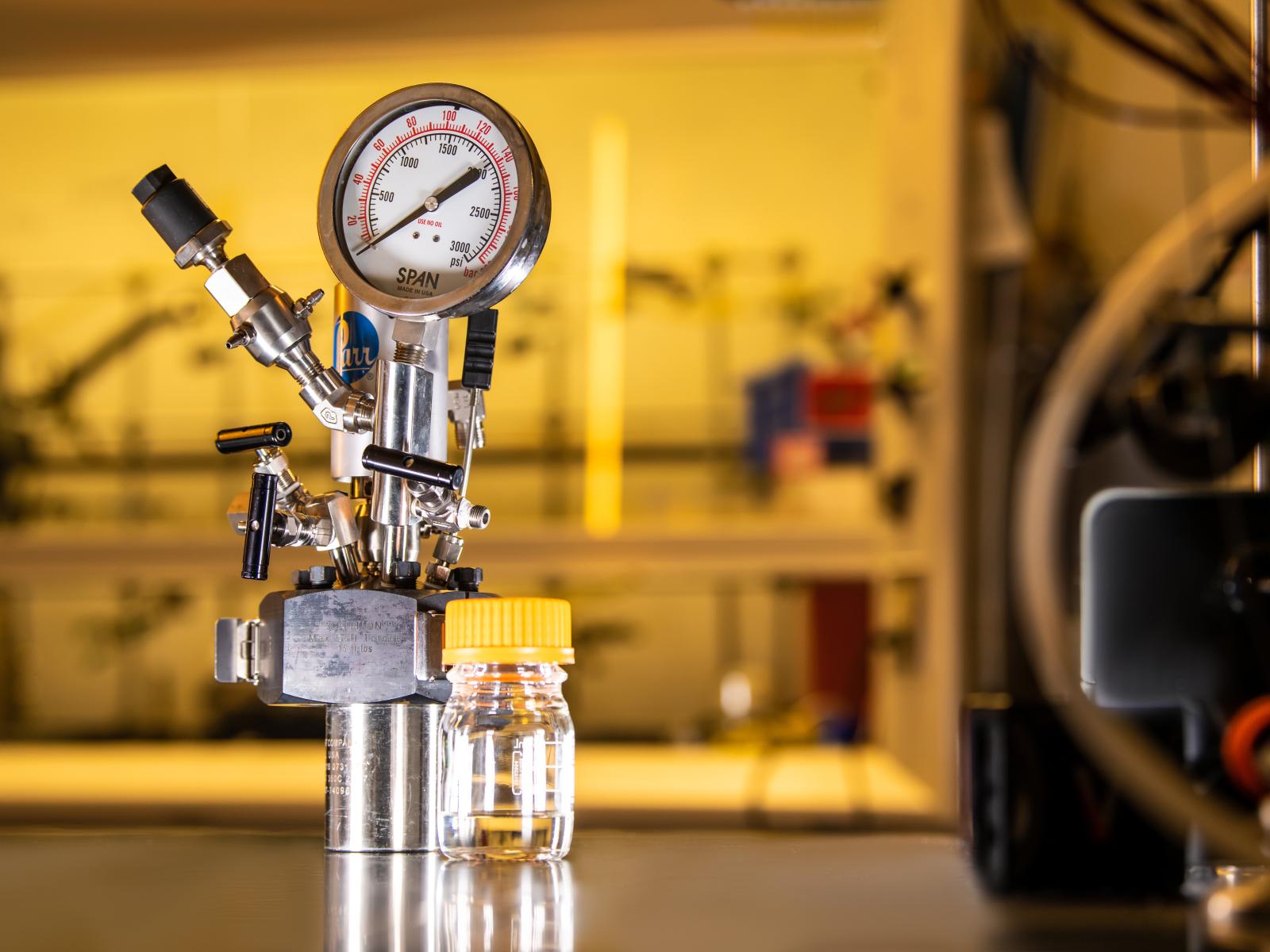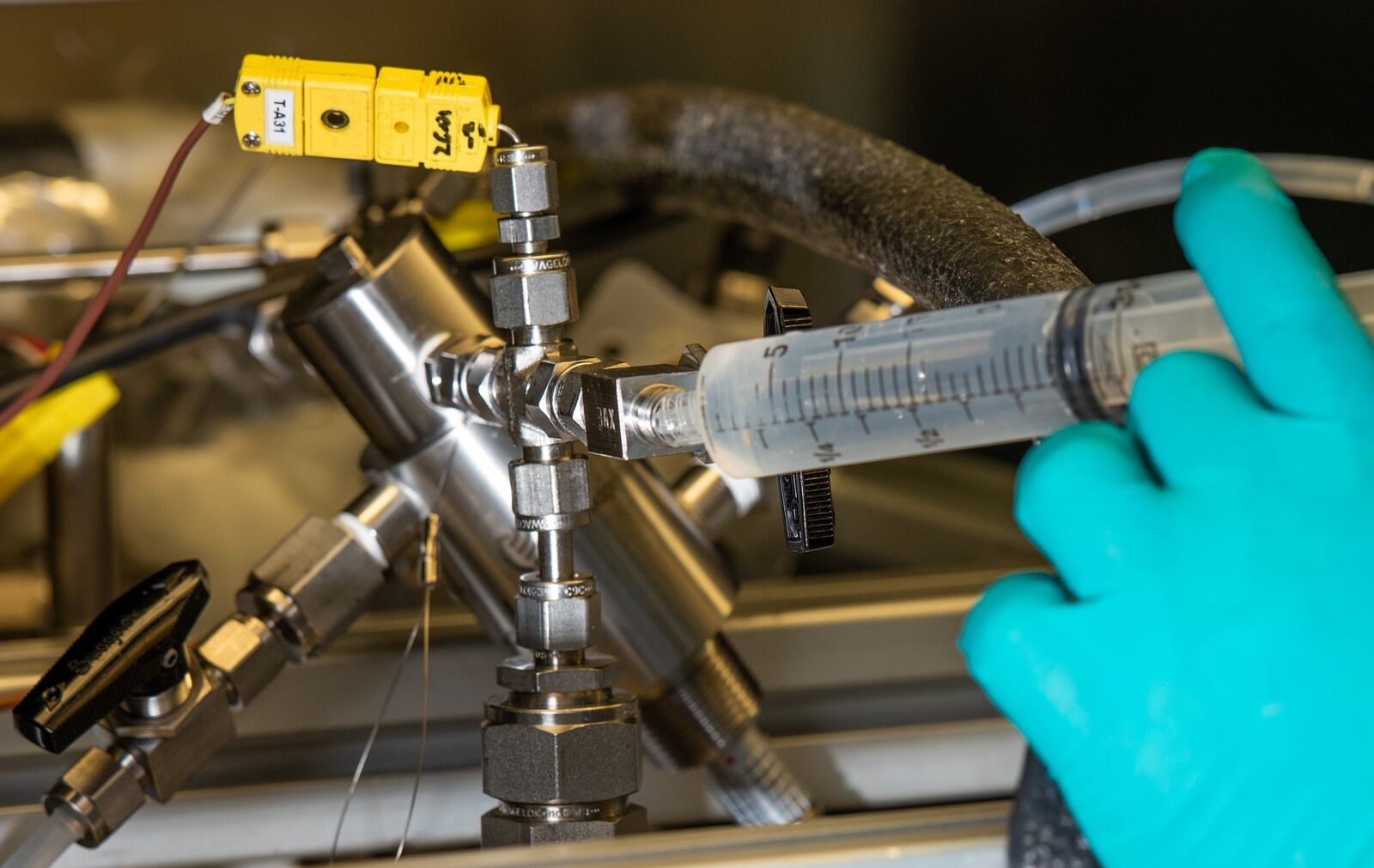Carbon Capture Laboratory
Discovering solutions to capture carbon dioxide before it enters the atmosphere

High-pressure autoclave used to study catalytic hydrogenations of CO2
(Photo by Andrea Starr | Pacific Northwest National Laboratory)
In support of the Department of Energy’s Office of Science and Office of Fossil Energy and Carbon Management missions, Pacific Northwest National Laboratory (PNNL) researchers have been working to unlock fundamental discoveries and transform them into technological solutions to capture carbon dioxide (CO2) before it enters the atmosphere.
Inside the Carbon Capture Laboratory are custom-built test units capable of improving existing capture technologies. PNNL researchers recently developed a capture solvent that has the lowest total costs of capture to date at $39/tonne CO2.

Specialized equipment based in PNNL’s Carbon Capture Laboratory includes:
- Wetted Wall Column: Measures mass transfer between liquid/gas phase to interpret adsorption kinetics.
- Laboratory-Scale Continuous Flow System: Interprets continuous capture performance of solvent media via recirculation of solvent in independent adsorption and desorption columns. Capture performance interpreted by in situ analysis of outlet gas streams and ex situ analysis of solvent stability.
- Pressure-Volume-Temperature Cell: Measures cell pressure and temperature in known cell volume housing known amount of solvent capture media to estimate CO2 loading. Used to interpret vapor-liquid equilibria and mass transfer (adsorption kinetics) via measurements at sub atmospheric pressures.
- High Pressure-Volume-Temperature Cell: Additional pressure and temperature measurement cell used to interpret vapor liquid equilibria and mass transfer (adsorption kinetics) via measurements at high pressures.